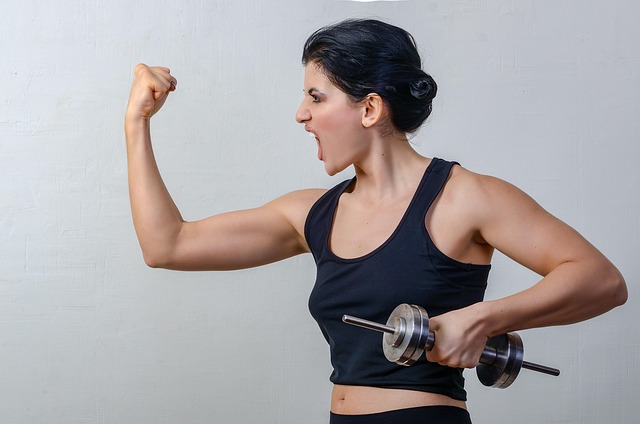In today’s fast-paced world, staying active often feels like a luxury we can’t afford. Between work meetings, family responsibilities, commuting, social obligations, and the never-ending to-do lists, finding time for exercise may seem impossible. But the truth is — you don’t need hours in the gym or long morning runs to stay active. Even with the busiest schedule, there are simple, smart ways to add movement into your daily life. Let’s talk about how.

Just Think Why Staying Active Matters (Even When You’re Busy)
We all know physical activity is important. It boosts your energy, keeps your heart healthy, reduces stress, and helps you sleep better. Regular movement can even improve your mood, sharpen your focus, and reduce the risk of diseases like diabetes, heart problems, and obesity.
But more importantly, staying active helps you feel good. It gives your body strength, your mind clarity, and your spirit a sense of confidence and balance — things we all need, especially in a hectic life.
15 Practical Tips to Stay Active in a Busy Life
1. Start Your Day with Movement
Before you grab your phone or coffee, take 5 minutes to stretch, do jumping jacks, or walk in place. A short burst of movement can wake up your body and set a healthy tone for the day.
2. Walk Whenever You Can

Walking is one of the easiest ways to stay active:
- Park farther from the store or office entrance.
- Take the stairs instead of the elevator.
- Walk while talking on the phone.
- Do short walking breaks every hour.
If you can sneak in 5 minutes here and there, it adds up to 30+ minutes a day — without even noticing.
3. Turn Chores Into Workouts
Household tasks like sweeping, mopping, gardening, and washing dishes can be surprisingly active. Add energy to these tasks:
- Do squats while folding clothes.
- Lunge from room to room.
- Dance while cooking.
It’s movement — and it counts!
4. Use Technology to Remind You
Use fitness apps, smartwatches, or even a timer on your phone to remind you to move. Set an alarm every hour to stand, stretch, or take a short walk.
Some apps offer short 7-minute workouts or chair exercises perfect for busy workdays.
5. Do “Exercise Snacks”
Instead of one big workout, try short “snacks” of activity:
- 10 push-ups in the morning.
- 10 squats before lunch.
- A 5-minute walk after dinner.
These micro-movements keep your blood flowing and your body awake.
6. Try Active Commuting
If possible, walk or cycle to work. Or, if you use public transport, get off one stop early and walk the rest. These small tweaks make a big difference over time.
7. Take the Stairs — Always
Stairs are everywhere — at work, in shopping malls, at home. Use them! Climbing stairs is a fantastic way to build leg strength, stamina, and heart health.
8. Stretch While You Watch TV or Scroll Your Phone
Watching a series or YouTube? Stand up, stretch, or do light exercises like leg lifts or arm circles while watching. You can stay entertained and active at the same time.
9. Work Out While Working
Yes, it’s possible! If you work at a desk:
- Try a standing desk or a mini-cycle under your desk.
- Do calf raises while on calls.
- Stretch every hour to avoid stiffness.
10. Make Movement a Family Thing
Get your kids or partner involved. Play outdoor games, take evening walks, or dance together. It turns movement into bonding time.
11. Use Lunch Breaks Wisely
Instead of scrolling social media during lunch, go for a brisk 10–15-minute walk. It will boost your energy, help digestion, and clear your mind.
12. Do Simple Workouts at Home
No time for the gym? No problem. Try:
- 15-minute YouTube workout videos
- Bodyweight exercises like squats, lunges, planks
- Yoga or stretching before bed
No equipment. No travel. Just move.
13. Make It Fun — Not a Chore
If you hate traditional workouts, try dancing, swimming, or hiking. Enjoyment is key to consistency. The more you love what you’re doing, the more likely you’ll stick to it.
14. Multitask with Movement
Waiting for laundry? Do a few squats. Brushing your teeth? Do calf raises. Watching a webinar? March in place. You can move more than you think, even during downtime.
15. Set a Realistic Goal and Track Progress
You don’t need to run a marathon. Aim to be active for at least 150 minutes per week, even in short sessions. Use a journal or app to track steps or minutes moved — seeing your progress keeps you motivated.
Rethinking What “Being Active” Really Means
Many people associate being active only with gym workouts, sports, or jogging. But in reality, being active simply means moving your body in a way that gets your heart rate up, stretches your muscles, and keeps you from sitting still for too long.
Let’s break this myth: You don’t need a perfect routine. You need a mindset that says, “Every bit of movement matters.”
When you stop thinking of physical activity as a chore and start viewing it as a gift to your body, you naturally become more mindful of movement opportunities throughout the day.
Busy Mind? Move to Clear It
A packed schedule doesn’t just take a toll on your time — it also overloads your mind. Constant work, multitasking, and digital distractions can make you feel overwhelmed. That’s exactly why staying active is not just good for your body — it’s powerful for your mind.
Even short physical activity helps:
- Release tension and boost mood
- Improve focus and productivity
- Prevent burnout and fatigue
If your schedule is busy, your brain needs movement more than ever.
Planning Ahead Makes a Huge Difference
Here’s a truth bomb: If you don’t plan for activity, it won’t happen.
Try these simple planning tricks:
- Schedule it like any other meeting — block 15–20 minutes in your calendar.
- Lay out your workout clothes the night before.
- Meal prep to save time for movement the next day.
- Keep resistance bands, yoga mats, or dumbbells visible as reminders.
Even a 10-minute plan makes movement easier to follow through on.
Time-Saving Movement Options That Work Wonders
Here are some ultra-practical movement ideas that don’t eat up your day:
Standing Meetings
Suggest walking or standing meetings at work. They boost energy and creativity and burn more calories than sitting.
Commercial Break Workouts
During a 30-minute TV show, do:
- 20 squats during one break
- 15 push-ups during the next
- Plank for 30 seconds after the episode
Deskercise
Seated leg lifts, arm circles, neck rolls, or squeezing a stress ball — small moves while working = big gains over time.
Walk-and-Talk
Need to call a friend or attend a virtual meeting? Walk around your house or office while on the call.
Low-Impact Options for Energy-Drained Days
Some days are just too exhausting. That’s okay. You don’t need to push hard every single day. But try to stay gently active even when tired:
- Stretching: Opens up stiff muscles and boosts circulation.
- Gentle yoga: Relaxes body and mind — perfect before bed.
- Breathing exercises: Engages your diaphragm and calms your nerves.
These “quiet movements” are still powerful in keeping your body active and stress levels low.
Parents: Make Movement a Family Affair
If you’re juggling kids and housework, fitness may seem out of reach. But kids need movement too! Make it a shared experience:
- Turn cleaning into a dance party.
- Do stretches or yoga together in the morning.
- Play outdoor games like tag, frisbee, or cycling.
Not only do you stay active, but you also build stronger family bonds.
Track Your Movement for Motivation
When life gets hectic, it’s easy to forget how much you’re actually doing. That’s where tracking tools help:
- Use a step counter or smartwatch to monitor daily steps.
- Keep a “movement journal” — write down how you moved each day.
- Download free fitness apps like MyFitnessPal, Google Fit, or 7 Minute Workout.
Seeing your progress visually keeps you accountable and motivated.
Listen to Your Body – It Talks
Sometimes, we push ourselves too hard because we think movement always has to be intense. But health is about balance.
If your body is tired, do something light.
If your energy is high, go for a quick power walk or strength session.
If you’re stressed, breathe deeply and stretch.
Respecting your body’s signals is the key to long-term success.
The Real Reward: How Being Active Changes Your Life
Once movement becomes part of your daily life, you’ll notice changes beyond just physical health:
✅ You’ll sleep deeper and wake up more refreshed.
✅ You’ll have more energy, even on the busiest days.
✅ Your mood will stabilize and anxiety will reduce.
✅ You’ll feel stronger, more confident, and proud of yourself.
These are life-changing benefits — and they’re available to you, even if you’re juggling work, home, and everything in between.
Small, Consistent Steps = Long-Term Results
One of the most important things to remember is: you don’t need to do everything at once.
Start small.
Move more today than yesterday.
Keep going.
Your future self — with more strength, confidence, and energy — will thank you for every single step you take today.
Conclusion: Movement Is Possible — Even on Your Busiest Days
In a world that never seems to slow down, your health often takes a back seat. But staying active doesn’t have to mean long workouts or a trip to the gym. It’s about making smart, simple choices throughout your day — standing instead of sitting, walking instead of scrolling, stretching instead of slouching.
Even the busiest schedules have space for movement if you change your mindset and focus on progress, not perfection.
Every step, every stretch, every little burst of energy you give to your body adds up. Over time, these small habits can lead to big, life-changing results.
So don’t wait for the “perfect time.” Start now, start small, and stay consistent.
Because even a busy life deserves a healthy body — and you deserve to feel your best.
